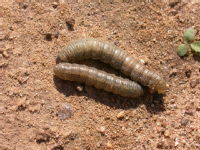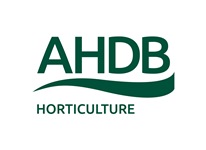All entries for August 2013
August 11, 2013
Rothamsted suction trap captures for week ending 4th August
Writing about web page http://www.rothamsted.ac.uk/insect-survey/Bulletins/2013WebBulletin15.pdf
Trap data for the week ending 4th August have been released:
Cabbage aphid - numbers generally lower than the previous week but highest at Writtle and Hereford
Peach-potato aphid - numbers generally lower than the previous week but highest at Broom's Barn
Potato aphid - numbers lower than the previous week but highest at Dundee and Elgin
Currant-lettuce aphid - only one captured - at Rothamsted
Willow-carrot aphid - numbers lower than the previous week but highest at Dundee
Black bean aphid - numbers lower than the previous week but highest at Broom's Barn
August 09, 2013
Carrot fly and hot weather
We would have expected the numbers of carrot fly captured on our traps at Wellesbourne to have increased again by now - to signify the start of the second generation. However, numbers remain low. This may be due to pupal aestivation because soil temperatures have been high for some time.
In some experiments we did many years ago, newly-formed carrot fly pupae were exposed to temperatures of 22-30oC for various 5-10 day periods during pupal development. Exposure to temperatures of 24oC and 26oC caused some, and exposure to 28oC and 30oC caused all, of the pupae to delay development. Development was resumend when the temperature was lowered. Pupae were sensitive to high temperatures only for approximately 4-10 days after pupation.
Carrot fly eggs/newly-hatched larvae are also susceptible to hot/dry conditions and mortality is increased. We do not know how much irrigation would reduce the effects of hot weather.
Carrot fly pupae
Cutworms
It seems that first generation turnip moths (cutworms) have now stopped flying at Wellesbourne. We captured male moths in pheromone traps between 13th June and 25th July - and this is at least 2 weeks later than 'normal'. It appears, therefore, that no more first generation eggs will be laid. However, there is still a risk from the larvae of eggs laid earlier on, and the cutworm forecast will continue to be updated until all these larvae are predicted to have reached the third instar, which will be towards the end of August.
Although it has been hot for several weeks, according to the cutworm model, the sporadic bursts of rainfall have reduced the risk of damage. However, in some locations there may have been insufficent rainfall to completely reduce the risk from batches of eggs that hatched in late June-early July and it would be interesting to hear whether there have been any incidents of cutworm damage?
Update from Wellesbourne
Yesterday we found:
- 12 carrot flies (3 traps) - so still no increase in numbers to signal the start of the second generation. Pupal aestivation......?
- 6 cabbage root fly eggs on 15 plants (second generation appears to be over)
- No silver Y moths - but they are definitely around in quite high numbers at present as we are catching them in a light trap locally
- 15 bean seed flies, 33 pollen beetles, 6 flea beetles (3 traps)
- Butterfly numbers have increased - 19 small white and 9 large white in 3 traps
- 3 diamond-back moth in 3 traps - and reports of activity elsewhere in the country
August 07, 2013
Update from Wellesbourne
Monday's sampling produced the follwoing counts:
- 12 carrot flies (3 traps) - the second generation appears to be even more delayed than predicted - perhaps there has been some significant pupal aestivation due to the high soil temperatures recently.
- 12 cabbage root fly eggs (15 plants) - probably signals the end of the second generation.
- 11 bean seed flies (3 traps)
- 29 pollen beetles, 9 flea beetles, 7 small white butterflies, 4 large white butterflies (3 traps)
- 18 silver Y moths (2 traps) - suggesting a recent influx of migrants
August 02, 2013
Update from Rothamsted Insect Survey
The latest information on aphid captures by the Rothamsted Insect Survey has just been released. bulletin_14_2013.pdf
More detailed information on the pest aphids of vegetable crops is here. aphid_news20130802.pdf
In summary:
- Peach–potato aphid suction trap numbers are increasing in England, but remain scarce in Scottish samples. However, the number of potato aphids in Scotland increased markedly this bulletin week.
- A total of 146 suction trap peach–potato aphids have been tested for insecticide resistance so far this year, and 140 have tested positive for MACE (these are resistant to pirimicarb) and 137 also tested positive for super Kdr (these are resistant to pyrethroids).
- Yellow water trays placed by Broom’s Barn at twenty eight sites in sugar beet areas caught 19 peach–potato aphids and no potato aphids during the period 24/7–30/7, roughly the same as the previous week.
- Pea and cabbage aphid numbers are increasing in central and southern England.
- The migration of willow–carrot aphid is now all but complete, with just some late stragglers north of the border.
- Currant–lettuce aphids were caught at four sites, and accumulated numbers are above the ten year means at four sites in central and southern England.
Update from Wellesbourne
Yesterday we found:
- 10 carrot flies (3 traps)
- 88 cabbage root fly eggs (15 plants)
- 17 bean seed flies (3 traps)
- 7 silver Y moths (2 traps)
- 1 diamond-back moth (1 trap)
- 18 pollen beetles, 7 flea beetles (3 traps)
 Rosemary Collier
Rosemary Collier

 Please wait - comments are loading
Please wait - comments are loading


 Loading…
Loading…
